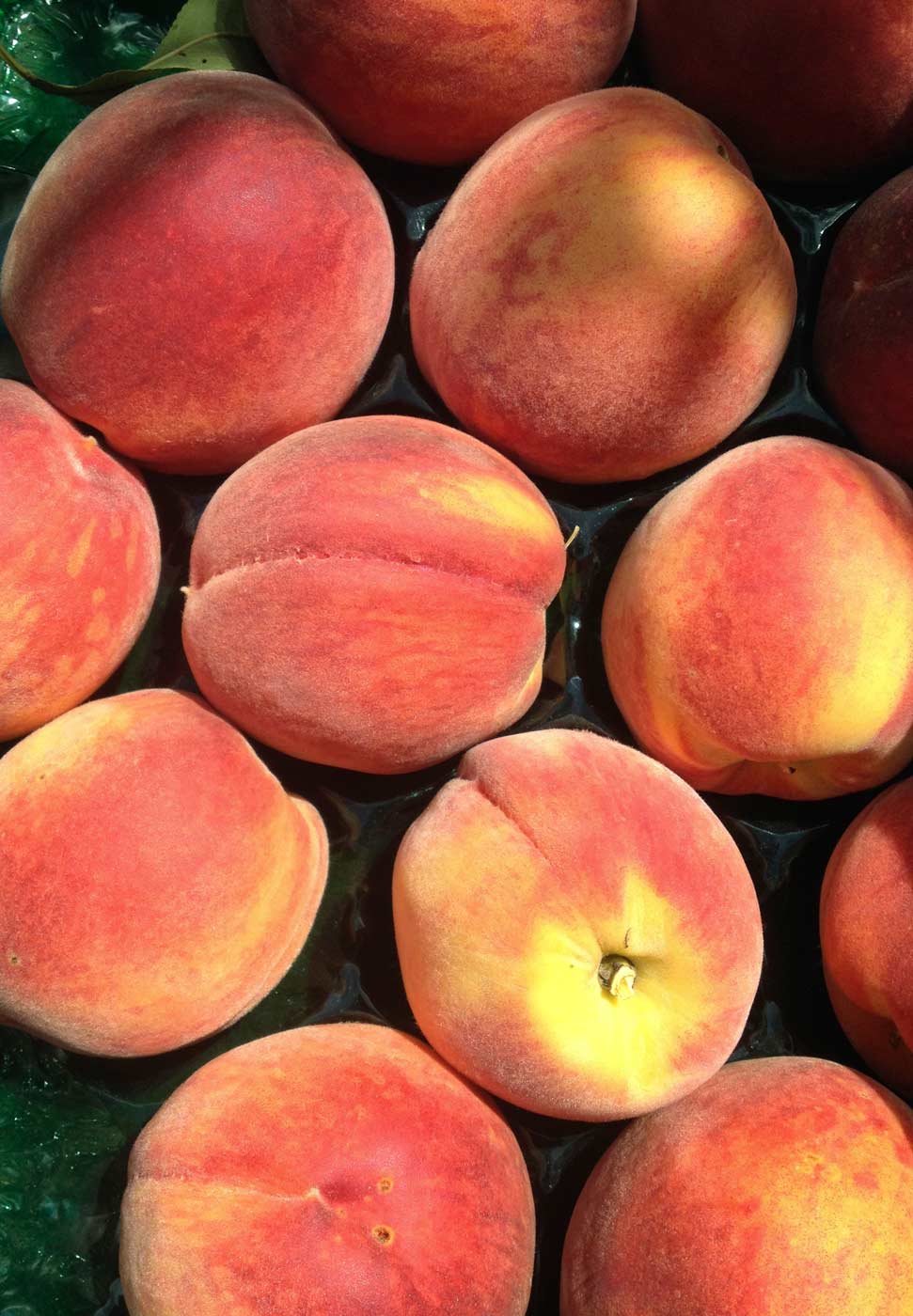
Redhaven peaches were part of an Ontario study looking at the effects of waxes and coating. The variety was included in a second part of the study examining how chilling and conditioning affect mealiness. The Redhavens shown here were not part of the study. (Courtesy Bill Shane/Michigan State University)
Ontario peach growers have experienced their share of pains in recent years — acreage has been in a steady decline, though yields and prices rebounded in 2017 — and researchers have been looking to improve the quality of the fruit coming out of the warehouse to help boost consumer demand.
One key issue, as always with peaches, is mealiness.
Jennifer DeEll, postharvest physiologist for the Ontario Ministry of Agriculture, Food and Rural Affairs, wrapped up a four-year study into postharvest disorders in Ontario peaches late last year with a goal of recommending best handling practices for warehouses.
Similar work has been done for the industry elsewhere, including the mid-Atlantic U.S. and in California. But Ontario peaches behave differently and require their own set of standards, DeEll said.
They also require recommendations by variety.
“There’s so much variation peach to peach. Compared to what I’m used to in apples and pears, you need huge sample sizes, because each peach varies so much,” she said.
The study had two key objectives: One, to investigate the effects of postharvest waxes and coatings on chilling injury and the quality of Ontario peaches. And two, to evaluate the effects of temperature conditioning prior to cold storage on chilling injury, mealiness and peach quality.
For the former, DeEll examined the effects of waxes and coatings on Redhaven, Glowingstar and Allstar peaches. In the first year, the researchers worked in a mini waxing system, built at laboratory scale by Matt Peters and Bartlett N.M. Inc. as a donation and support for the project, to ensure there were no significant differences from work done at a commercial scale. Then, in the following years, they examined the effects of different brushes — and whether they were wet or dry — and several products on fruit quality.
There were no real surprises in the findings, DeEll said. “If you start brushing them, it doesn’t matter if it’s wet or dry, you’re going to get increased weight loss. You’re brushing the fuzz off, and it’s providing an area that will lose moisture, so you’ll get an increase in weight loss.”
Packers are brushing peaches because consumers are demanding a fuzz-less peach, but they’re damaging the fruit in the process and putting wax back on to hopefully prevent some of the weight loss, she said. Overall, the research showed that applying the wax reduces the weight loss a bit, but it doesn’t fully compensate for the damage caused by the brushes.
What about chilling?
DeEll found more interesting the second part of her study, examining the effects of chilling and conditioning on mealiness.
For this study, researchers held Redhaven and Coralstar peaches at 10 degrees Celsius for 24 or 48 hours. They then stored the fruit at zero to plus 1 degree Celsius or 5 degrees Celsius for four weeks and evaluated the fruit after holding it at room temperature until firmness reached close to 4 pounds.
The results showed that chilling fruit for 48 hours, versus 24 hours, showed more consistent benefits. The researchers found no negative effects of conditioning on fruit quality. However, conditioning at 20 degrees Celsius, compared with 10 degrees, increased rot incidence and weight loss and resulted in lower appearance ratings and advanced ripening.
Conditioning also does not allow for subsequent temperature abuse, which results in additional mealiness and chilling injury. “You can’t change the recommended storage temperature down the road,” DeEll said.

Examples of Redhaven peaches. (Courtesy Bill Shane/Michigan State University)
Looking forward
Harvested acres of peaches in Ontario fell to 4,397 acres in 2017, the lowest since at least 1979, according to data from the Ontario Ministry of Agriculture. However, yields increased 20 percent from the previous year, and growers saw their highest prices ever at 78 cents per pound.
Going forward, new varieties are expected to play an increasingly larger role in Ontario’s peach industry. The region’s Vineland Research and Innovation Centre has several new varieties under development, but most are still new enough that researchers have not yet made maturity recommendations — a question with a wide range of answers. Most also have not had postharvest reviews.
These areas are expected to be a focus of research into these new varieties in the months and years ahead, DeEll said.
Advances in variety development may allow researchers to breed out the problem of mealiness in new cultivars going forward, but researchers still need to continue to understand the problem in the varieties growers have at hand, said Christopher Marsh, professor of pomology at the University of Maryland, who has done extensive research on peaches in the mid-Atlantic region. He credited DeEll with her work to try to help Ontario growers tackle the problem. Narrowing the window on temperatures will be key.
“The next step for all of us, whether it’s Ontario or Washington state or California, is to really figure out how to get around this,” Marsh said. “Working with the varieties we have, is there a way to figure out what the optimum temperature is so we cannot get mealy and not have them rot, too.” •
—by Shannon Dininny






Leave A Comment